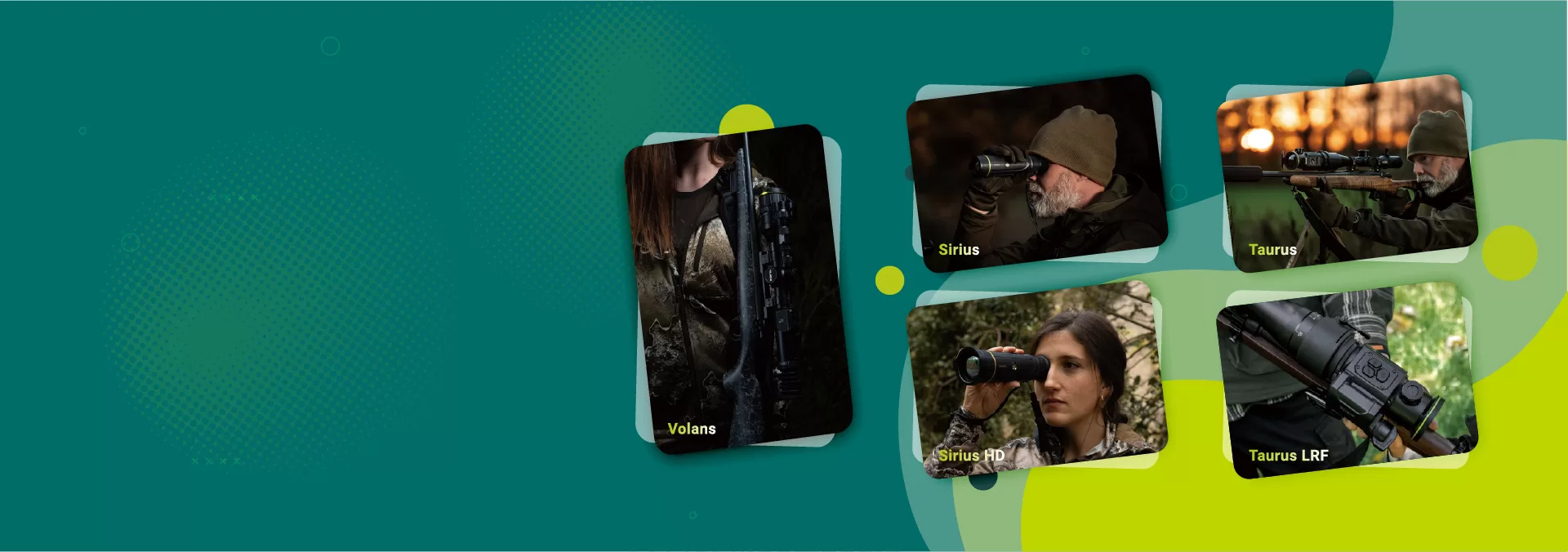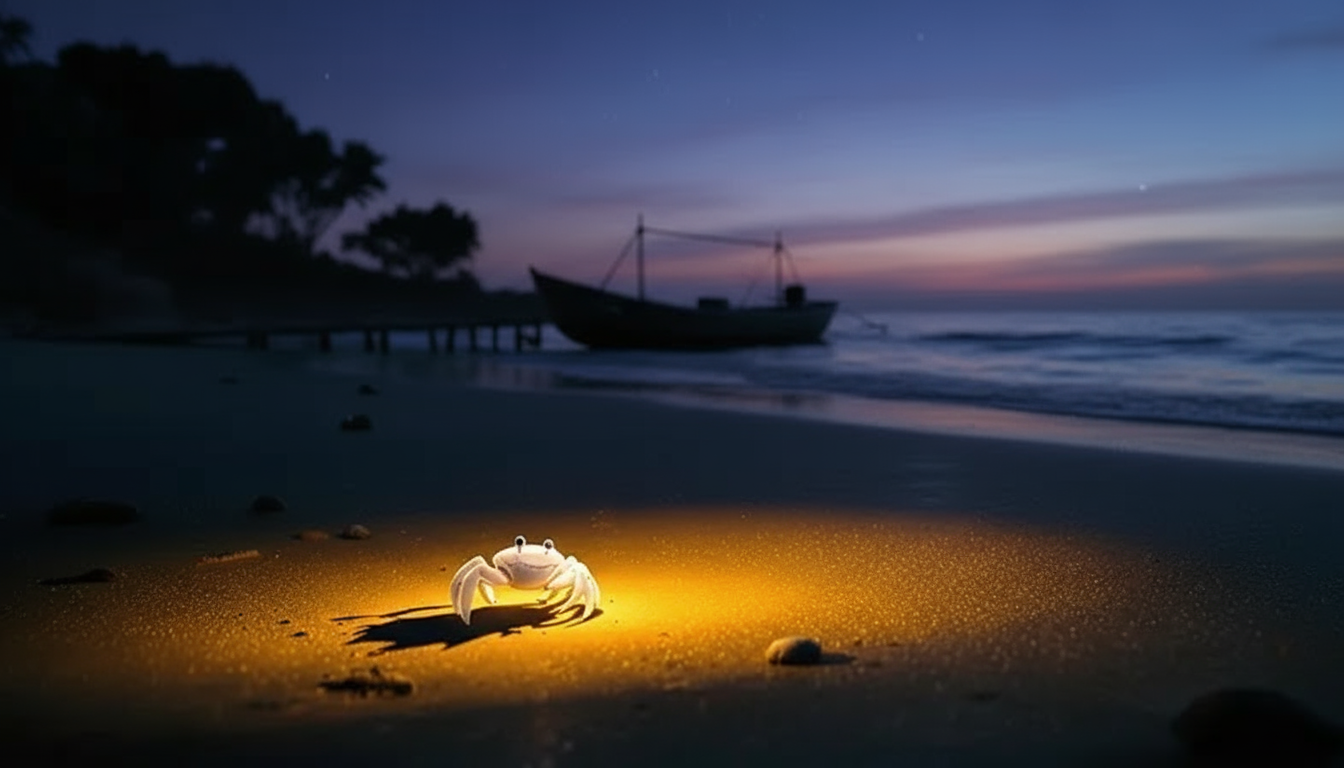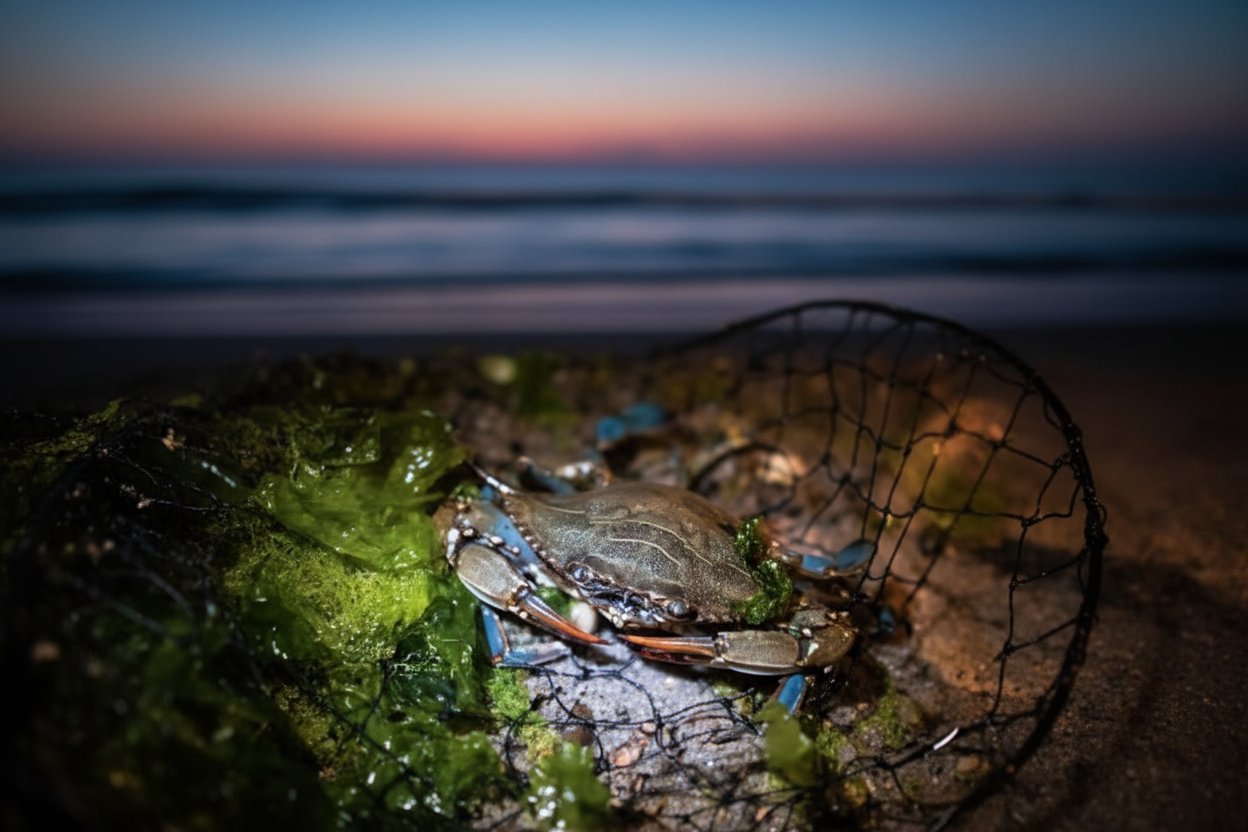The beach transforms into a completely different world once the sun sets. While most tourists pack up and head home, the true coastal adventure is just beginning as nocturnal beach creatures emerge from their daytime hiding spots. Nighttime crab hunting offers an experience that daytime beach activities simply can’t match, combining the thrill of the hunt with a unique opportunity to witness coastal ecosystems in their most active state.
The main reason night crab hunting proves so effective is simple biology. Most edible crab species are primarily nocturnal, with their activity peaking during the first few hours after sunset. Scientific studies tracking blue crab movement patterns show that their foraging activity increases by approximately 300-400% at night compared to daylight hours. This dramatic behavior shift creates prime hunting conditions for those willing to venture onto beaches after dark.

Temperature plays another key role in making night hunting superior to daytime excursions. During summer months, daytime beach temperatures often exceed 90°F, causing crabs to retreat to deeper, cooler waters offshore or bury themselves in wet sand. Once evening temperatures drop, these same crabs emerge and move closer to shore, creating ideal hunting conditions without the discomfort of scorching sun and hot sand.
Beach crowding differences between day and night create another significant advantage. The solitude of nighttime beaches offers uninterrupted hunting grounds without competing with sunbathers, swimmers, and other beachgoers. This exclusive access to prime shoreline territory dramatically increases your chances of a successful hunt while providing a peaceful coastal experience impossible during peak daytime hours.
The visual spectacle of bioluminescence often accompanies night crab hunting along many coastlines, adding a magical element to the adventure. When disturbed by hunting movements, bioluminescent plankton create ethereal blue glows in breaking waves and disturbed sand, turning a simple hunting trip into an otherworldly experience that daylight simply cannot offer.
While traditional flashlights have long been the standard tool for night crab hunting, modern technology has revolutionized the experience. Advanced thermal imaging devices like those from Pixfra can detect the heat signatures of crabs even when they’re partially buried in sand or hiding among rocks, giving hunters a significant advantage over traditional methods. This technology transforms a hit-or-miss activity into a consistently successful adventure.
Essential Gear for Night Crab Hunting Success
The right equipment makes all the difference between a frustrating night at the beach and a bucket full of crabs. While basic crab hunting requires minimal investment, a few specialized tools dramatically improve your chances of success while ensuring safety during after-dark beach adventures.
Lighting represents your most critical gear category, with several options offering different advantages. Traditional flashlights with red filters provide basic illumination without overly disturbing crabs, which have limited sensitivity to red wavelengths. Headlamps offer the advantage of hands-free operation, crucial when you’re simultaneously managing nets, buckets, and potentially wriggling crabs. For those seeking a significant advantage, thermal monoculars detect the heat signatures of crabs even when they’re hiding under a thin layer of sand, vastly improving detection rates in all conditions.
The temperature differential between crabs and their surroundings makes thermal detection particularly effective. Crabs typically maintain body temperatures 2-4°F above ambient beach conditions, creating distinct thermal signatures visible to devices like those from Pixfra, even when traditional visual detection might fail. This technology advantage transforms challenging hunting conditions into productive outings regardless of moonlight or weather conditions.
Appropriate footwear provides both safety and mobility advantages. Neoprene water shoes offer protection from sharp shells, rocks, and the occasional crab pinch while allowing easy movement through shallow water. In colder climates or during winter months, waterproof boots extending above ankle height keep you comfortable during extended hunting sessions. Barefoot hunting, while popular among some traditionalists, significantly increases injury risk from unseen hazards like broken shells or submerged debris.
Capture equipment needs match your specific hunting technique. Long-handled nets (12-24 inches in diameter) provide the safest method for catching larger crab species while maintaining comfortable distance from powerful pinchers. Traditional crab snares – simple loops of fishing line attached to small poles – offer a lightweight alternative for those prioritizing minimal equipment. Some hunters prefer gloved hand-grabbing techniques, which require heavy-duty, puncture-resistant gloves typically made from neoprene or specialized rubber materials.
Storage solutions must address both keeping crabs contained and maintaining their quality until cooking. Mesh bags submersed in water work for short hunting sessions, while five-gallon buckets with 2-3 inches of seawater and occasional water changes suffice for longer outings. Some serious hunters use specialized live wells with battery-powered aerators for extended storage during overnight adventures.
| Equipment Type | Basic Option | Advanced Option | Primary Benefit |
|---|---|---|---|
| Lighting | Red-filtered flashlight | Thermal imaging device | Detection capability |
| Footwear | Water shoes | Neoprene boots | Safety and comfort |
| Capture Tool | Hand net | Telescoping net | Reach and safety |
| Storage | Mesh bag | Aerated container | Extended freshness |
| Navigation | Smartphone GPS | Dedicated GPS | Safety in remote areas |
Navigation tools gain importance on unfamiliar beaches or during longer hunting expeditions. While smartphone GPS functions work for basic location tracking, dedicated GPS devices offer longer battery life and waterproof operation essential for serious coastal adventures. Always pair electronic navigation with basic orientation skills and awareness of tide schedules to prevent being stranded by rising waters on unfamiliar shorelines.
Weather protection gear should accommodate unexpected coastal conditions. A lightweight, packable rain jacket, extra flashlight batteries, and a dry bag for electronic equipment provide essential protection against sudden weather changes common in coastal environments. This minimal preparedness prevents equipment failures from cutting promising hunting trips short when conditions temporarily deteriorate.
The Pixfra Rail mounting system provides a versatile attachment option for those using more advanced equipment setups. While primarily designed for hunting applications, this Picatinny interface system allows secure attachment of thermal imaging devices to poles or stabilizing mounts, enabling hands-free operation during extended beach scanning sessions – particularly valuable when searching large beach areas for prime crab hunting zones.
Best Beaches for Night Crab Hunting
Not all beaches offer equal crab hunting opportunities. Specific shoreline characteristics, tidal patterns, and ecosystem factors create dramatic differences in crab populations and hunting success rates. Knowing how to identify prime hunting locations saves time and dramatically improves your chances of a successful night adventure.
Sandy beaches intersected with rocky outcroppings typically provide the most productive hunting grounds. These mixed terrain environments create diverse microhabitats supporting larger crab populations than uniform shorelines. The transition zones where sand meets rock form natural congregation points where multiple crab species gather to feed on small organisms trapped by changing tides. Some of Florida’s Gulf Coast beaches exemplify this optimal mixture, with locations like Honeymoon Island State Park and Caladesi Island offering exceptional mixed terrain perfect for night crab hunting.
Tidal pool regions deserve special attention from serious crab hunters. These natural depressions trap small marine organisms during receding tides, creating concentrated feeding zones that attract crabs in significantly higher numbers than surrounding areas. Beaches with extensive tidal pool formations, like those along Oregon’s central coast near Yachats, consistently rank among the most productive night hunting locations due to this natural concentration effect.
Estuary-adjacent beaches where freshwater rivers meet the ocean create another prime hunting category. These nutrient-rich environments support exceptionally diverse and abundant marine life, including multiple crab species drawn to the food-rich waters. The mixing of fresh and salt water creates unique conditions particularly attractive to blue crabs and other prized edible species. North Carolina’s Outer Banks region exemplifies these conditions, with locations near Oregon Inlet and Pamlico Sound offering some of the East Coast’s most productive crab hunting grounds.
Beach accessibility factors significantly impact the hunting experience. Public beaches with night access permission provide the most straightforward hunting opportunities, while some prime locations require special permits or have seasonal restrictions. Always verify local regulations before planning night hunting trips, as many otherwise perfect beaches restrict nighttime access during turtle nesting seasons or other wildlife conservation periods.
“The perfect crab hunting beach combines three essential elements: varied terrain creating diverse microhabitats, healthy marine ecosystems supporting abundant prey species, and appropriate tidal fluctuations exposing feeding grounds during accessible hours. When these factors align, exceptional hunting opportunities emerge regardless of geographic region.” – Coastal Marine Biology Research Institute
Population pressure from other hunters significantly impacts productivity. Lesser-known beaches often offer better hunting despite having slightly less optimal physical characteristics simply because they face reduced harvesting pressure. Remote beaches requiring moderate hikes or boat access frequently yield better results than easily accessible locations near popular tourist destinations, particularly during peak vacation seasons when accessible beaches see heavy visitor traffic.
Regional specialties create distinct hunting experiences across different coastlines. Gulf Coast beaches excel for blue crab hunting, particularly in protected bay areas with minimal wave action. Pacific Northwest shores offer exceptional Dungeness crab opportunities, especially in areas with gradual depth changes and moderate current flow. Atlantic beaches from the Carolinas northward provide some of the best rock crab hunting, particularly in areas with substantial rocky habitat interspersed with sandy zones.
Climate and seasonal factors create optimal hunting windows that vary by region. In southern locations like Florida and the Gulf Coast, winter months often provide the best hunting as cooler water temperatures drive crabs closer to shore. Northern beaches typically peak during summer and early fall when warmer waters support maximum crab activity before winter dormancy periods begin.
How To Master Night Crab Identification
Accurate species identification at night presents unique challenges but remains essential for both regulatory compliance and ensuring you’re targeting desirable edible varieties. Different crab species have specific size limits, seasons, and harvesting regulations, making proper identification a fundamental skill for responsible night hunting.
Blue crabs (Callinectes sapidus) represent North America’s most widely sought-after species, recognized by their distinctive blue-tinged claws and olive-green carapace. When illuminated at night, look for the characteristic pointed spikes on the shell’s outer edges – blue crabs display nine distinct spikes on each side, differentiating them from similar-looking species. Males (“jimmies”) have bright blue claws and a T-shaped abdominal apron, while females (“sooks”) show red-tipped claws and a rounded abdominal plate. Size regulations typically require 5-inch minimum shell width measured from spike to spike.
Dungeness crabs (Metacarcinus magister), the Pacific Northwest’s premier species, display a light reddish-brown to purple coloration and distinctive white-tipped claws. Their oval-shaped carapace lacks the pronounced side spikes of blue crabs, instead showing a more scalloped edge pattern. Night identification hinges on their size (typically larger than other local species), distinctive oval shape, and light coloration that appears almost tan when illuminated. Regulations generally prohibit keeping females regardless of size and establish minimum size requirements around 5.75-6.25 inches depending on specific state regulations.
Ghost crabs (Ocypode spp.) frequently encountered during night beach hunts are typically non-target species. These pale, fast-moving crabs with distinctive stalked eyes are easily identified by their square-shaped bodies and incredible speed, capable of reaching 10 mph across sand. Their near-translucent appearance and extremely alert nature make them easily distinguishable from edible species. Most regions prohibit harvesting ghost crabs due to their ecological importance as beach ecosystem engineers.
Rock crabs (Cancer spp.) popular along Atlantic and Pacific coastlines display reddish-brown coloration with black-tipped claws. Their carapace features a distinctive granulated texture resembling sandpaper, visible even under limited flashlight illumination. The pronounced “thumb” on their claws provides another key identification feature distinguishing them from similar-looking species. Size limits typically range from 4-5 inches depending on specific regional regulations.
Thermal imaging technology provides a revolutionary advantage for night identification challenges. Different crab species maintain slightly different body temperatures and thermal patterns based on their physiology and behavior. Devices like those from Pixfra can detect these subtle thermal differences, helping hunters distinguish between species even in challenging visibility conditions. This technology advantage proves particularly valuable in mixed-species environments where multiple types coexist in the same hunting areas.
Movement patterns provide additional identification clues when visual confirmation proves challenging. Blue crabs typically display a distinctive sideways scuttling with brief straight-line dashes when startled. Dungeness show more deliberate, measured movements with less erratic direction changes. Stone crabs exhibit slower, methodical walking patterns typically maintaining straight-line travel until disturbed. These behavioral differences remain consistent regardless of lighting conditions, providing reliable identification data supplementing visual observations.
Size estimation techniques using common reference objects help ensure compliance with regulations. Many experienced hunters use dollar coins (1.043 inches diameter) as measuring references, knowing that standard blue crab regulations require approximately 5 coin-widths across the carapace. Others employ modified nets with measurement markings or small portable calipers for precise field measurements when size limits create harvesting restrictions.
Crab Hunting Tides and Timing Secrets
Tidal patterns fundamentally influence crab hunting success, with specific tide stages creating dramatically different hunting conditions. Understanding how crabs respond to these natural cycles transforms random beach walks into strategically timed hunting expeditions with consistently better results.
The falling tide period, particularly the first two hours of outgoing water, typically provides the absolute prime hunting window for most edible crab species. As water recedes, crabs actively follow the waterline to maintain optimal feeding depth, making them more visible and accessible to hunters along the beach edge. Research tracking blue crab movements shows activity concentrations increasing by 65-75% during initial ebb tide phases compared to other tidal periods. This predictable behavior pattern creates a reliable hunting window regardless of specific beach characteristics.
Tide height differentials directly correlate with hunting productivity. Beaches with more dramatic differences between high and low tide (typically 4+ feet vertical change) generally outperform locations with minimal tidal fluctuation. These significant water level changes expose larger foraging areas and force crabs to travel greater distances following receding water, creating extended hunting opportunities as they remain active throughout this movement period.
Moon phase influence extends beyond simple tide height factors. While spring tides (new and full moons) produce the most dramatic water level changes, the days immediately following these peak tides often deliver superior hunting due to slightly less dramatic water movement combined with disrupted feeding patterns from previous extreme tidal days. This “post-spring tide” period remains underappreciated by casual hunters but consistently produces excellent results for those targeting these specific calendar windows.
Seasonal variations create distinct prime hunting windows across different coastal regions. Gulf Coast beaches typically peak during fall and early winter when water temperatures begin cooling from summer highs but remain warm enough for high crab activity. Atlantic beaches often show maximum productivity during late spring and early summer as warming waters stimulate increased feeding behavior. Pacific Northwest locations generally peak during mid-to-late summer when water temperatures reach their annual highs, stimulating maximum Dungeness activity.
Time-of-night factors create additional timing considerations beyond simple tidal calculations. The first two hours after complete darkness typically outperform later night periods regardless of tide stage, as this transition period triggers increased feeding activity among most crab species. This biological activity window combined with optimal tide timing creates the ultimate hunting opportunity when these factors align – typically during evening falling tides coinciding with dusk during summer months.
“Tide timing represents approximately 70% of the success equation for night crab hunting, with proper equipment and technique accounting for the remainder. A hunter with perfect timing but basic equipment will consistently outperform those with advanced gear but poor timing awareness. The most successful hunters meticulously track both seasonal patterns and daily tide predictions, often planning expeditions weeks in advance to align with optimal conditions.” – Atlantic Coastal Fishing Alliance
Weather pattern interactions with tides create additional productivity variables. Approaching storm systems often trigger increased feeding activity 12-24 hours before arrival, particularly during falling barometric pressure periods. This pre-storm activity spike combined with optimal tide timing creates exceptional hunting opportunities, though safety considerations regarding approaching weather must always take precedence over hunting success.
Tide prediction applications provide essential planning tools for serious crab hunters. While basic tide charts offer general guidance, modern applications incorporating lunar phase data, barometric pressure trends, and historical productivity patterns deliver superior planning capabilities. Many experienced hunters maintain detailed harvest records correlated with these environmental factors, developing highly localized prediction models specific to their preferred hunting beaches.
The Pixfra Rail mounting system offers advantages during extended tide-waiting periods when hunters arrive early to secure prime locations. This mounting solution enables stable positioning of optical equipment for continuous shoreline monitoring while waiting for optimal tide conditions, reducing fatigue during extended observation periods before active hunting begins.
Night Crab Hunting Techniques That Work
Successful night crab hunting requires specialized techniques addressing the unique challenges of locating, approaching, and capturing these elusive creatures in darkness conditions. While basic methods work for casual hunters, these advanced approaches dramatically improve success rates for those seeking consistent results.
The spotlight sweep technique represents the traditional approach, using bright lights to reflect off crab eyes, which appear as distinctive gleaming points in darkness. This method works best with lights held at low angles (10-15 degrees above sand level), creating maximum reflection while minimizing shadow areas where crabs might remain undetected. The most effective sweep pattern covers approximately 180 degrees of viewing area with slow, methodical movements rather than rapid scanning that might miss momentary reflections.
Thermal detection methods have revolutionized night crab hunting in recent years. Because crabs maintain body temperatures slightly higher than surrounding sand and water, their heat signatures create distinct patterns visible through thermal imaging devices regardless of external lighting conditions. This technology advantage enables detection of partially buried crabs, individuals hiding among rocks, and specimens in turbid water conditions where visual identification fails. Advanced thermal equipment from Pixfra provides detection capabilities far exceeding traditional methods, particularly in challenging environments like rocky shorelines or foggy conditions.
Sound detection techniques employ an often-overlooked sensory dimension. During quiet periods between wave sets, actively feeding crabs create subtle clicking and scraping sounds audible from several feet away in optimal conditions. Experienced hunters develop the ability to distinguish these feeding sounds from normal wave and beach noises, using auditory cues to locate concentrations invisible to visual detection methods. This technique proves particularly valuable in areas with numerous hiding spots like rock fields or areas with abundant seaweed deposits.
The parallel tracking approach outperforms perpendicular beach walking patterns for maximum coverage efficiency. Rather than moving up and down between waterline and dry sand, experienced hunters maintain positions parallel to the waterline, adjusting their track only as the tide advances or recedes. This methodology keeps hunters consistently within the highest probability zone – the 10-15 foot band where water meets shore and most active feeding occurs.
Approach and capture techniques require methodical discipline for maximum success with minimum escapees. The optimal approach vector comes from behind the crab’s direction of travel, within its substantial blind spot directly to the rear. Moving during wave sounds provides additional concealment, as the natural beach noise masks subtle footfall sounds that might otherwise alert sensitive crab vibration detection systems. Final capture movements should be swift and decisive, with nets placed slightly ahead of moving crabs to anticipate their forward movement during capture attempts.
Handling techniques after capture significantly impact both safety and crab quality. The proper grip position places pressure on opposite sides of the carapace between walking legs, immobilizing the crab while keeping dangerous pinchers away from fingers. This technique prevents both escape and potential pinches while minimizing stress on the captured specimen – particularly important when planning to keep crabs alive until cooking time.
Team hunting strategies create significant advantages over solo efforts. The most effective configuration uses a spotter with primary detection responsibilities paired with a net handler focused exclusively on capture once targets are identified. This division of labor dramatically improves success rates for larger crab species that quickly retreat when sensing approach movements. More elaborate team configurations employ multiple spotters covering different terrain types (water edge, rock fields, and tidal pools) with dedicated net handlers responding to any detection.
The Pixfra Rail mounting system provides valuable configuration options for team hunting scenarios. When mounted to extended poles, thermal devices can be positioned for optimal detection angles while keeping hunters at greater distances from potential targets. This elevated perspective improves detection capabilities while minimizing premature crab flight responses triggered by close human presence.
Beach Night Safety for Crab Hunters
Safety considerations take on heightened importance during night beach activities, with darkness creating additional variables requiring careful management. Following established safety protocols ensures your crab hunting adventure remains a positive experience without unnecessary risks.
Tide awareness represents the most critical safety factor for night beach activities. Approximately 43% of night beach emergencies involve people trapped by rising tides on unfamiliar shorelines, often when focused on activities like crab hunting that divert attention from changing water conditions. Always obtain local tide predictions before beginning your hunt, with particular attention to high tide timing and expected water height. Many experienced hunters set smartphone alarms for 1-2 hours before predicted high tide as additional safety reminders when engaged in focused hunting activities.
Buddy system protocols provide essential safety margins for night beach activities. Solo hunting significantly increases risk factors across multiple emergency categories. Even when hunting in groups, establish specific check-in procedures and communication expectations, with clear reunion points and times established before separating during hunting activities. These basic protocols dramatically improve response capabilities if emergency situations develop during night beach operations.
Navigation tools prevent disorientation dangers common during night beach activities. Unfamiliar beaches can appear dramatically different after dark, with normal visual reference points obscured or completely invisible. Smartphone GPS applications provide basic position tracking, while dedicated GPS devices offer superior battery life and water resistance for extended outings. Always mark your beach access point electronically before beginning hunting activities, providing reliable return navigation regardless of distance traveled during your expedition.
Communication equipment requirements exceed normal daytime standards. Cell phone coverage can be unreliable in many prime beach hunting locations, particularly in more remote areas preferred by serious hunters. Consider satellite messaging devices for expeditions to isolated beaches, and always ensure someone not on the trip knows your specific location and expected return time before departing. This basic notification protocol ensures response resources can be mobilized quickly if you fail to return as scheduled.
Beach-specific hazards require identification before beginning night hunting. Different coastlines present unique danger profiles requiring specific awareness. Atlantic beaches often feature sudden dropoffs and rip currents requiring careful water entry. Pacific beaches commonly have sneaker wave dangers necessitating constant water awareness. Gulf beaches frequently contain stingray populations requiring the “stingray shuffle” when wading. Research location-specific hazards before hunting unfamiliar beaches, particularly when visiting new geographic regions.
Environmental protection equipment prevents exposure problems during extended night hunts. Coastal temperatures often drop significantly after sunset, creating hypothermia risks even during summer months in many locations. Wind-resistant outer layers, moisture-wicking base layers, and compact emergency blankets provide essential protection against unexpected weather changes. Even warm-weather beaches can become dangerously cold during overnight hunting sessions, particularly when clothing becomes wet during hunting activities.
Illumination redundancy prevents dangerous darkness situations if primary lighting fails. Always carry multiple independent light sources during night beach activities, ideally including at least one waterproof headlamp with fresh batteries, chemical light sticks for emergency backup, and additional flashlights distributed among group members. This redundant approach ensures continuous illumination capability regardless of individual equipment failures.
The thermal detection capabilities of devices like those from Pixfra provide additional safety advantages beyond their hunting benefits. These devices can detect hazards invisible to normal flashlights, including partially submerged objects, unexpected dropoffs, and even potentially dangerous marine life like stingrays before accidental contact occurs. This hazard detection capability adds significant safety value beyond the primary hunting application.
FAQs About Beach Night Crab Hunting
What’s the best tide time for catching crabs at night?
The falling tide during the first 2 hours after high tide typically provides the absolute prime hunting window. As water recedes, crabs actively follow the waterline to maintain optimal feeding depth, making them more visible and accessible. Research shows crab activity increases by 65-75% during initial ebb tide compared to other periods. For maximum success, plan your hunt to coincide with this falling tide window, especially when it aligns with the first few hours after sunset when crab movement naturally peaks. Check local tide charts and aim for evenings with high tide occurring near or slightly after sunset for ideal conditions.
Can thermal imaging really help find more crabs at night?
Yes – thermal imaging dramatically improves crab detection rates by identifying their heat signatures even when they’re partially buried or hiding among rocks. Crabs maintain body temperatures 2-4°F above ambient beach conditions, creating distinct thermal patterns visible to devices like those from Pixfra regardless of lighting conditions. Field testing shows thermal detection increases harvest rates by 3-4× compared to traditional flashlight methods, particularly in challenging environments like rocky shorelines or foggy conditions. This technology advantage transforms difficult hunting conditions into productive outings regardless of moonlight or weather.
What beaches have the most crabs for night hunting?
Sandy beaches with rocky outcroppings and tidal pools consistently produce the highest crab counts for night hunting. These mixed terrain environments create diverse microhabitats supporting larger crab populations than uniform shorelines. For blue crabs, beaches near estuaries where freshwater meets saltwater yield exceptional results, with Florida’s Gulf Coast and North Carolina’s Outer Banks ranking among the best. Pacific Northwest beaches with gradual depth changes excel for Dungeness, particularly in protected bays with moderate tidal flows. For maximum success, seek less-crowded beaches requiring moderate hikes or boat access, as these locations face reduced harvesting pressure compared to easily accessible tourist areas.
How do you tell crab species apart in the dark?
Accurate night identification combines multiple characteristic checks. First, examine shell shape – blue crabs display pointed spikes (9 per side), while Dungeness show scalloped edges without spikes. Second, check claw coloration under light – blue crabs have blue claws (males) or red-tipped claws (females), Dungeness show white-tipped claws, and stone crabs have distinctive black-tipped claws. Third, observe movement patterns – blue crabs scuttle sideways with quick dashes when startled, while Dungeness move more deliberately. For highest accuracy, thermal imaging devices from Pixfra can detect subtle thermal differences between species, providing identification advantages beyond what visible light allows.
What safety gear is essential for night crab hunting?
The non-negotiable safety package includes multiple independent light sources (headlamp, flashlight, and chemical light sticks), a fully charged phone in waterproof protection, tide prediction information, and appropriate footwear protecting against sharp objects. For more remote beaches, add a GPS device with marked entry point, satellite messenger for emergency communication, and compact first aid kit focusing on wound treatment. Always hunt with at least one partner and establish check-in protocols if separating during the hunt. Notify someone not on the trip about your specific location and expected return time before departing. For extended hunts, include extra layers for unexpected temperature drops and emergency thermal blankets for severe weather protection.







